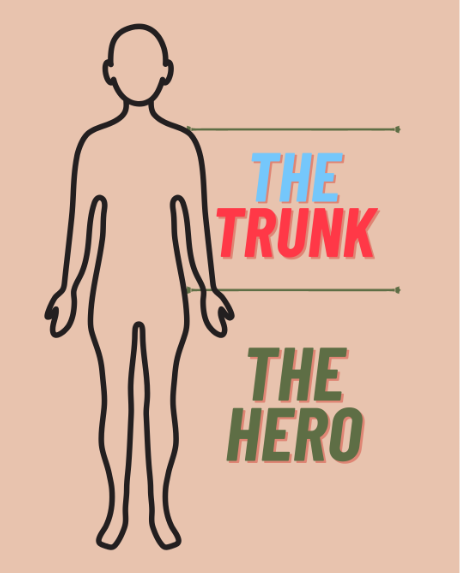The Trunk – The Hero of the Body
Published: 10 Aug 2023
If a child is facing difficulties – whether it be frustration with academics, inability to regulate strong emotions, difficulty in communication and social skills – rather than focusing on these as separate issues, maybe it’s time to turn our attention to the TRUNK.
When we’re referring to the trunk, we are referring to the part of the body that is shoulder to shoulder, and hip to hip. The trunk is also where most of the spine is situated. According to Nobel Prize winning neurologist Dr Roger Sperry, 90% of the stimulation and nutrition to the brain is generated by the movement of the spine.
With mobility in the spine (and therefore trunk), the brain is able to send out the right messages to the various parts of the body. This means that the brain can make better connections, with more effective pathways firing if the spine is in good shape.
This is why the TRUNK is the HERO, and cannot be neglected when addressing developmental and behavioural issues. From this perspective, the brain is the driver, and the arms and legs are the support staff.
When children don’t have control of their trunk, they might be impulsive and constantly fidgeting, and sit with their legs in a W-shape. They could also have difficulty with gross motor coordination and maintaining control of their body. This often translates to poor posture and its negative effects, as well as focus and attention issues.
People with poor posture typically have eyes looking down all the time - the shoulders are hunched or flexed and the back is rounded with hips contracted in a posterior pelvic tilt. In this position, the visual field is short and narrow, the spine is fixed or rigid and the person may not be available or open to learning.
For example, if a child has poor handwriting skills, we often zoom in on the fine motor skills - focusing on the hand and the wrist. But the hand and the wrist connect to the elbow and to the shoulder, which connects to…(you guessed it) THE TRUNK. It is likely that the child in this case has poor postural control, and the negative effects of this have trickled to the extremities like handwriting.
To address focus and attention issues or any of the issues we listed above, we have to start treating the TRUNK like the HERO it is.
Modifying the trunk posture alone can help significantly with focus and attention issues. We can do this by increasing the awareness of the trunk and improving spinal mobility.
Here are some easy solutions that you can start doing to treat the trunk as the hero:
1 . Massage areas of the trunk slowly: Abdomen, lower back, areas between the shoulders, front and back of the trunk
Massaging and putting light pressure on these areas increase a person’s awareness of the trunk by increasing blood circulation around the area.
2 . Pelvic tilt exercises:
Pelvic tilts help build a stronger core and thus help with control of the trunk.
3 . Shaking the hips:
Learning to shake the hips can increase spinal mobility.
All of these suggestions can help increase control of the trunk, and improve the mobility of the spine. When we see and treat the trunk as the hero, we can improve our posture thus inviting in new perspectives, create improved neural pathways in the brain (enhancing learning) and vice versa.
At Neural Connections, we focus on offering treatment and protocols to help children regulate their emotions and behaviour better. Schedule a Discovery Call with us today to see if we can help.

